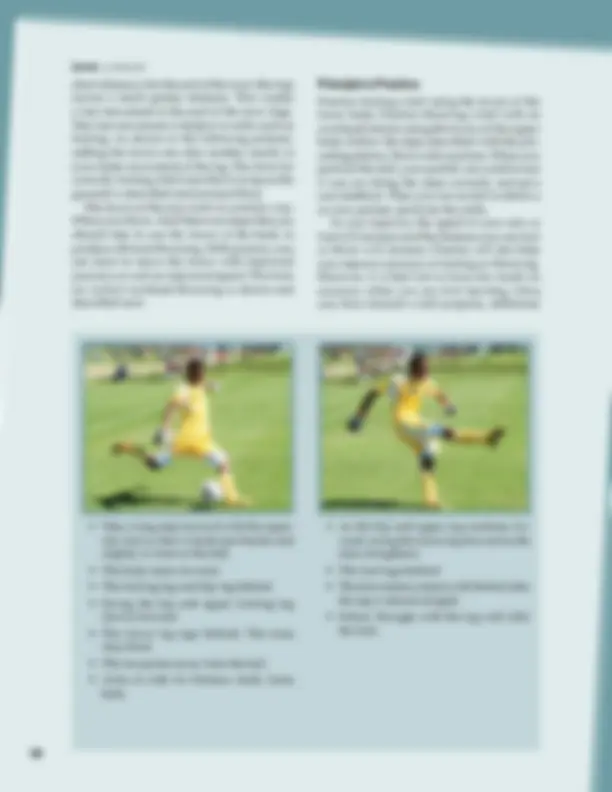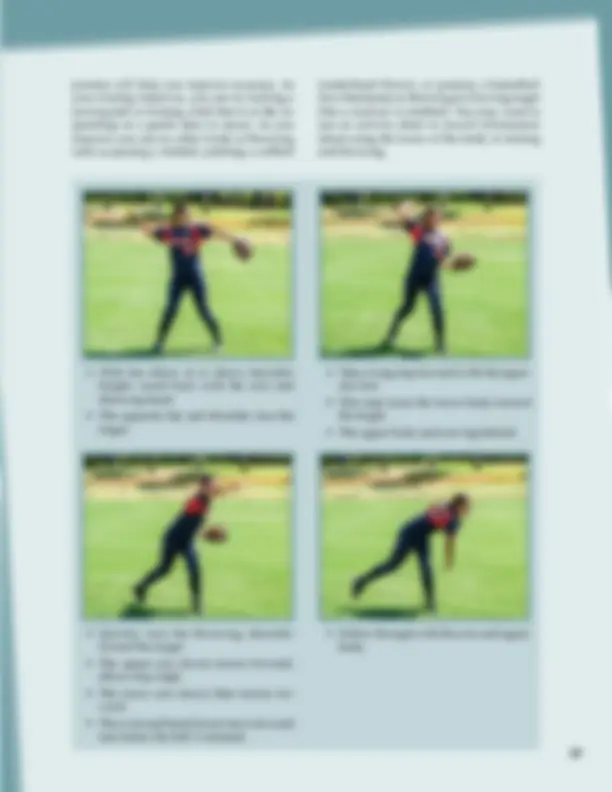




Study with the several resources on Docsity

Earn points by helping other students or get them with a premium plan


Prepare for your exams
Study with the several resources on Docsity

Earn points to download
Earn points by helping other students or get them with a premium plan
Community
Ask the community for help and clear up your study doubts
Discover the best universities in your country according to Docsity users
Free resources
Download our free guides on studying techniques, anxiety management strategies, and thesis advice from Docsity tutors
The concept of levers in the context of the human body, focusing on first, second, and third-class levers and their applications in various movements such as toe raises, push-ups, biceps curls, and kicking. It also provides illustrations to help understand the principles.
What you will learn
Typology: Study Guides, Projects, Research
1 / 4

This page cannot be seen from the preview
Don't miss anything!



34 Fitness for Life: Middle School
amount of force. For example, first-class levers allow you to lift your whole body weight with the relatively small leg muscles (figure 2.2). A first-class lever also causes a change in the direction of the force so that the muscles in the back of your lower leg, which pull upward on the back of your foot (your heel), make the front of your foot (your toes) push downward against the ground. In a first-class lever, the fulcrum (or pivot point) is between the resistance (or weight) and the effort (or force). First-class levers can be used to either increase the force applied or increase the speed and distance of movement. Second-class levers are not common in the body. However, a good example of a sec- ond-class lever is seen in a person doing a push-up (figure 2.3). The body is straight from the shoulders to the feet. It acts as a lever with
The levers of the body allow you to apply force to create movements of many different kinds. A lever is a very basic machine. It is a bar or a stiff, straight object that can be used to lift weight, increase force, or create speed. The bones of your body are levers that allow you to perform many skills. For example, the bones of your foot act as a lever when you push with your foot while you walk and run. The calf muscles shorten, causing your foot to push down against the ground. To do its work, a lever must have a pivot point at its middle or at its end. When you use the foot as a lever in walking and running, the ankle is the pivot point and the bones of the foot are the levers. When you use the bones as levers in this way, they are called first-class levers. First-class levers can allow you to lift a heavy weight with a small
E6939/Corbin/F02.02/565245/mh-R
First-class lever: Toe raise
R
E
F
Muscle shortens
Pivot point (fulcrum [F])
Muscle force (effort [E]) pulls up on lever
Lever pushes down against resistance (R) of floor
Lever (foot)
Figure 2.2 First-class lever: toe raise.
E6939/Corbin/F02.03/565246/mh-R
Second-class lever: Push-up Arm muscles pull on bones to straighten arms (effort [E])
Arms push body up
Body weight is lifted (resistance [R])
Pivot point (fulcrum [F])
R E
F
Lever (body)
Figure 2.3 Second-class lever: push-up.
34
Learning Skills for Enjoying Physical Activity 35
the pivot at the feet. The weight of the body is near the center, near the waist, and the arms work at the shoulders to lift the body. The force required for the arms to lift the body is about half the total body weight. In a second-class lever, the weight (or resistance) is between the fulcrum (or pivot point) and the effort (or force). Second-class levers increase the force applied. The most common levers in the body are third-class levers. In a third-class lever, the effort (or force applied) is between the weight (or resistance) and the fulcrum (or pivot point). Third-class levers increase speed in movements such as throwing and kicking. In the human body, third-class levers have the pivot point at one end. The muscles apply force to the lever near the pivot. This causes the levers (your bones) to move. For example, in performing a biceps curl (see figure 2.4), the force of the contraction of the muscles of the upper arm pulls the lever (the lower arm) upward. The fulcrum or pivot point is the elbow, and the weight or resistance is the weight of the lower arm and the weight that’s held in the hand. Third-class levers allow you to do fast movements such as throwing, kick- ing, or swinging a tennis racket. When you kick a ball, you use the bones of the upper leg, the lower leg, and the foot as third-class levers. In a third-class lever, the
Figure 2.4 Third-class lever: biceps curl.
effort (or force applied) is between the weight (or resistance) and the fulcrum (or pivot point). Third-class levers increase speed. For example, in kicking, the muscles of the hip move the upper leg forward, the muscles of the front of the upper leg move the lower leg forward, and the muscles of the lower leg move the foot forward and upward with great speed. That allows you to kick the ball a good distance if you make good contact with the ball when you kick it. Adding the levers one at a time in the proper sequence results in even faster movement of the leg. The levers of the arm work in a similar way. With practice, you can learn to move the levers with improved accuracy as well as improved speed. You have to learn to use the levers of the body efficiently if you are going to learn a wide variety of skills. The more you practice, the better you become at using the body levers. With practice your timing improves so that you can kick, throw, jump, and do other skills faster and better. Practice helps your body memorize movements so that you can control them better and so that you can perform skills more accurately.
When you move one of the body’s third-class levers such as a leg, the muscles move only a
(continued)
35
E6939/Corbin/F02.04/565247/mh-R
Third-class lever: Biceps curl E R
F
Pivot point (fulcrum [F]) Lever (forearm) Weight (resistance [R])
Arm and weight move up
Muscle shortens Muscle force pulls up on lever (effort [E])
Learning Skills for Enjoying Physical Activity 37
practice will help you improve accuracy. As your kicking improves, you can try kicking a moving ball or kicking a ball that is in the air (punting) as a goalie does in soccer. As you improve you can try other kinds of throwing such as passing a football, pitching a softball
(underhand throw), or passing a basketball (two-hand pass) or throwing to a moving target (like a receiver in football). You may want to use an activity sheet to record information about using the levers of the body in kicking and throwing.